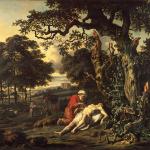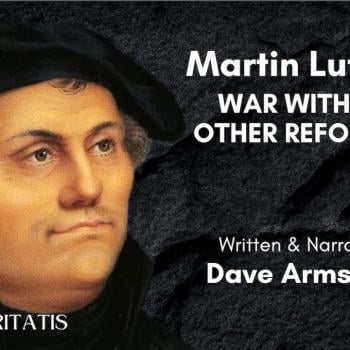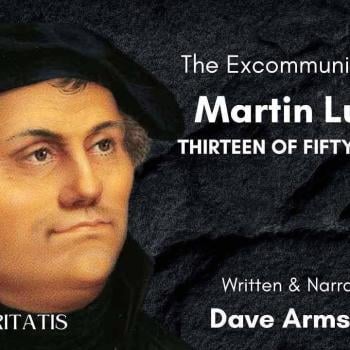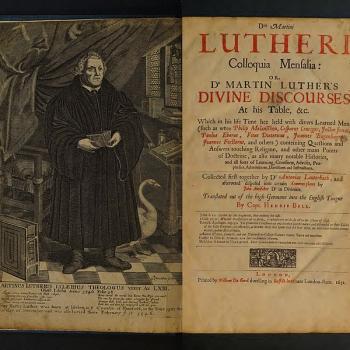Part Three: Evangelical “Born-Again” (?) Experience, More Lukewarmness, and Personal Revival (1977-1982)
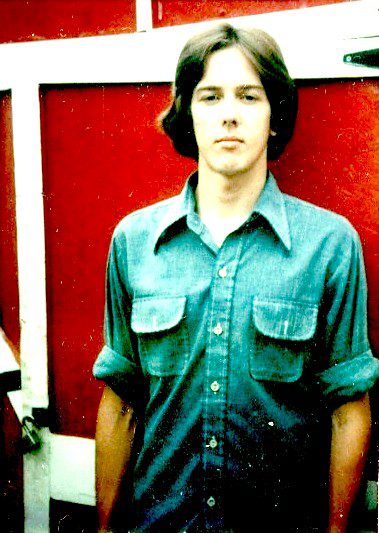
This is the ten-part story of my complete religious history, from nominal Methodism (1958-1967), to the occult and practical atheism (1968-1976), through evangelical Protestantism, counter-cult, pro-life, evangelistic, and apologetics work (1977-1990), and finally on to the fullness of the Catholic faith in 1991. It is found complete (75 pages) in my 2013 book, Catholic Converts and Conversion.
See All Ten Parts:
Part One: Nominal Methodism, Occult, and the Seeds of a Serious Christian Commitment (1958 – early 1970s)
Part Two: Nature Mysticism, Romanticism, Bible Movies, and the “Great Depression” (1968-1977)
Part Three: Evangelical “Born-Again” (?) Experience, More Lukewarmness, and Personal Revival (1977-1982)
Part Four: Apologetics, Abundant Evangelical Blessings, and Protestant Evangelistic Campus Ministry (1983-1989)
* * * * *
Evangelical Conversion to Christ, as His Disciple (1977)
It was (on the human level; not to neglect grace) the combination of my depression and new found knowledge of Christianity that caused me to decide to follow Jesus as my Lord and Savior in a much more serious fashion, in July 1977: what I would still regard as a “conversion to Christ,” and what evangelicals regard as the “born-again” experience or getting “saved.” Others might view it as being filled with the Spirit. I continue to look at this as a valid and indispensable spiritual step, even though, as a Catholic, I would, of course, interpret it (theologically) in a somewhat different way than I did formerly. It was a profound event for me, and transformed and changed my life. I’ve never been the same since.
Right after this “first” conversion I wrote a poem that merged stories of Jesus with nature, sort of a St. Francis-type of ethos and mindset, which was the culmination and fitting conclusion of my odyssey from nature mysticism to Christianity. This poem literally connected my “nature romanticism” to Christianity and being a disciple of Jesus. Here it is:
The Dream
Once I had a dream
A very special dream
mountains
rivers
forests
glowed with pristine gleam
sky of deepest blue
clouds
white dove in flight
sun with mighty splendor shone on earth so very bright
Pastures in the morning
Beautiful
green
country scent
Down into the valley seeking solitude I went
slowly I walked, looking for what I had never found
Longing to hear the loveliness of nature’s sounds
music of birds singing
flowing water
filled my head
Lying on the ground wondering
with only leaves for a bed
Nature in all its magnificence and glory so near
No reason — says the sky — to feel any fear
I am here
Look and you will see
Come follow me and you shall be free
Sun on the horizon
Grandeur in blazing orange red
so much to understand
New ideas filled my head
I made my way up the hill as night began to fall
I was lost and confused when I heard someone call
This man knew my name and my thoughts, which was odd
And before long we started talking about God
I was astounded by how much he knew
He spoke with a wisdom possessed by very few
We arrived at his house and I said goodbye
He embraced me and looked directly into my eyes
Deep down in my soul I knew the reason why
I awoke with Heaven’s rays shining down on my face
Full of joy and peace and an indescribable grace
Who was he whom I met last night?
I pondered as I watched a white dove in flight
Then I understood what had happened the day before
Now I shall know the meaning of love forevermore
I still don’t find the poem corny (though I can see how someone might), 36 years later, after lots of life experience and a much deeper knowledge of Christianity and the Christian life. I feel those things just as strongly now as when I wrote them. It expresses the Other, the Transcendent (mediated through nature), and (most importantly) a mystic communion with God (particularly the incarnate Son, Jesus).
If God could be mediated through His creation, then it is easy to see an almost intrinsic connection between this and sacramentalism: God conveys grace through nature. The longing we feel when we gaze upon a spectacular mountain vista, for example, is similar to a spiritual longing for heaven. There is something much, much deeper there. It’s not only (or primarily) about a mass of rock, geology, senses, and optic science. God has put a meaning into those things, and it leads men to Himself.
My depression didn’t go away immediately, but the hopeless black despair did, after I devoted my life to Jesus as His disciple, and once the depression left after six months, it never returned (thank heavens).
Spiritual Milk and My Early Uneven Path in Evangelicalism
Despite my initial burst of zeal, I settled into a relatively lukewarm spiritual state for three years: sort of a “holding pattern.” I would go to Bible studies, at Messiah Church: the evangelical Lutheran church my brother and sister attended, that had an active outreach to the inner-city and young people.
It was a great place to start (and was fabulous with regard to the emphasis on wholehearted discipleship), but I didn’t even go to church on Sunday; I only attended the Bible studies. At this time I was reading books by Hal Lindsey, since biblical prophecy (in his case, a school of thought called dispensationalism) had caught my interest, and C. S. Lewis. And I read the Bible from cover to cover.
I have immense admiration for Protestant pastors, most of whom are very godly men, devoted to the gospel and the spiritual edification and growth of their flock. I have had lots of pastor friends (Baptists, independents, Anglican, and others). I’ve always tried to show a great deal of personal respect towards them, and I don’t think my outlook is all that different (if at all) from other seriously committed Catholics that I know.
Rev. Dick Bieber of Messiah Church in Detroit is one whom I consider a highly influential spiritual father in my life. I received innumerable blessings and benefits from his teaching, that would take a few years to bear fruit, but they greatly contributed to my Christian life, and even (indirectly) to my present Catholic apostolate of apologetics and evangelism. It’s always good to ponder the personal paths that God has led us through, in His mercy and by His grace.
What Rev. Bieber and my brother Gerry (profoundly influenced by him as well) taught me the most at this stage of my life (1977-1980), was that Christianity was a Way: a Way of Life. It wasn’t something that was merely consigned to a few hours on Sunday and then forgotten the rest of the week. Since I looked up to both of them, this couldn’t help but have a huge impact on me.
Rev. Bieber is an extraordinary preacher and teacher (and man). As I look back at what he taught me and gave to me in my Christian life (and to my brother and sister Judy and many many others), I see that it was the firm conviction that discipleship and following Jesus has to be a total, radical commitment: a life-changing force. This is central to all Christianity: be it Protestant, Catholic, Orthodox, or groups that consciously attempt to defy all three categories.
This aspect, and the high emphasis on sharing the gospel with others (including street evangelism) was what Messiah was about: what it was known and renowned for. And it had a profound and lasting influence on my life. I’ve always sought to radically follow Jesus (not that I always succeeded, by a long shot!), and evangelism and specifically its “half-sister”: defense of the faith, or apologetics, have been my vocation in life. I didn’t totally “get” (or do) evangelism until 1981 (more on that below), but the seeds had been laid down at Messiah, to bear fruit later on.
These emphases are almost a case study of what Catholics can learn from evangelicals. Neither a total, heartfelt commitment to Jesus nor evangelism are at all foreign to Catholicism, in terms of what we believe. In fact, in the 16th century when Protestantism began, Catholics were doing virtually all of the world evangelism and missions work, while Protestants did very little, and it was hardly stressed at all by Luther and Calvin.
In practice, today, many Catholics do not have this sense of urgency, to commit their lives to Jesus and to share the exciting truths learned as a result. Therefore, to the extent that a person has received these teachings in an evangelical setting, one has been taught what they should have been taught in the Catholic Church, but often are (sadly) not taught.
That’s a failure of Catholic teaching and catechesis, not of the Catholic worldview itself (which completely agrees). And so such profoundly true teachings received in the evangelical Protestant phase of my life literally have made me a better Catholic today.
The Messianic Jewish Connection
Also in the late 70s I often attended a related group: a mixture of messianic Jews and “Jesus People” (mostly young), called the Northwest Fellowship. There I was blessed by the wonderful teaching of the late Haskell Stone (a Jewish convert to Christianity), who taught philosophy of religion at a local college.
The emphasis at Northwest was much the same as with Messiah Church. One might roughly categorize both as forms of what is historically known as “pietism.” This school of thought and practice has its limitations (arguably, underemphasis on doctrine and theology being one) but as far as it goes, this brand of Christianity is, I think, very edifying and beneficial, especially for those just starting out; learning the ropes. I also acquired my great love of Jewish influences on Christianity from Northwest Fellowship.
I was still (as I was for the entire time before I became a Catholic), extremely “unliturgical.” It always bored me (going back to my Methodist days). On the few occasions that I went to Messiah on Sunday I “endured” the liturgy, counting the minutes, and always looked forward to the sermon (a very good “low church” Protestant I was: entirely concentrated on the “Word” and preaching!). Nor did I attend on Sundays at the Northwest Fellowship.
Spiritual Renewal and Watershed Events in My Christian Life
In August 1980, I finally yielded my whole being to God, and experienced a profound “renewal” in my spiritual life, as it were, including, importantly, an understanding as to why sex outside of marriage was wrong. The immediate cause was attending a non-denominational, charismatic church named Shalom House, which began as a coffee house, reaching out to young people and those who had gotten caught up in an immoral lifestyle (much as Messiah Church had done, as part of the larger “Jesus Movement” among young people).
God uses different environments and people to reach people in various ways. I certainly had enough solid, outstanding teaching at Messiah Church and Northwest Fellowship to grow and flourish spiritually, yet I didn’t experience a profound “revival” in the Holy Spirit until I went to this church. All things in God’s time . . . it took many years for me to wake up and acknowledge and worship God as God, and it took a while more for Christian truths to travel from my head to my heart, and to “catch on fire.” Again, none of this is inherently “unCatholic.”
The pastor at Shalom was Joe Shannon, who many years later returned to the Catholic faith of his childhood. His successor was Catholic radio talk show host and author, Al Kresta. In due course, God would draw these two former Catholics back to His Church, and He would also bring in folks like me who had virtually no prior familiarity with Catholicism at all.
While attending Shalom House from 1980-1982, several momentous events in my life occurred, that had tremendous and singular influence on my later apologetics career, and I started truly worshiping God from the heart at the services on Sunday, for the first time in my life.
First, I began intensely studying (with an outreach group devoted to the topic) what we called the “cults”: heretical sects that claimed to be Christian, but were not, since they denied the Holy Trinity. I specialized in Jehovah’s Witnesses. This was a form of apologetics, so I was actually seriously engaged in what would later be my life’s work, as early as 1981.
The heretical sects’ denial of the divinity of Christ led me to do a very in-depth Bible study of the evidences for that, and for trinitarianism. Later, I included this research in two of my books: Mere Christian Apologetics (KJV verses) and Theology of God (revised, with RSV verses). This constituted my first extended foray into systematic, biblical theology, and my Jehovah’s Witnesses research also brought me to my first acquaintance with early Church history: since the Church had battled against the forerunners of this error: the Arians, in the fourth century.
Secondly, one day at Pastor Joe’s house, I noticed evangelical apologist Josh McDowell’s classic work, Evidence That Demands a Verdict sitting on an end table. This initiated in a flash my interest in “historical apologetics”: evidences for why Christians believe that Jesus rose from the dead, why the Bible was trustworthy, and other similar aspects. My blog theme of “biblical evidence” comes from the phraseology of this book. I had read a few C. S. Lewis books in the late 70s, but nothing of this “historical” sort of apologetics, and it was a bombshell.
I became passionately interested in any and all intellectual reasons or rationales for why people should believe that Christianity is true, and particularly, historical arguments of this nature. Generally, things have to challenge my mind or intellectual curiosity for me to want to pursue them further. That was as true in those days as it is now. And it’s why I took so quickly to apologetics: the harmony between faith and reason.
During the same period, I had started attending Inter-Varsity Fellowship at Wayne State University, in my senior year. It emphasizes a thoughtful, more intellectual evangelicalism. I was introduced to authors like Francis Schaeffer. I regret not having gone to the Inter-Varsity meetings three years earlier, but (as with so many things in my life), “better late than never.”
Thirdly, in 1981, I participated in Shalom’s evangelistic, “witnessing” activities on the campus of the University of Michigan in Ann Arbor, at the Art Fair. This began a literal revolution in my life, since I had the opportunity to start sharing all of the new knowledge of Christianity I was gaining, and to apply an increasingly confident apologetics insight to evangelism: combining the intellectual with the spiritual.
I found it to be equal parts exciting and challenging: evangelism and apologetics in a live, spontaneous street setting. I had discovered what would be my vocation and my career. I knew, then, what I was to do with my life; what God wanted me to do with it.
I returned to Ann Arbor every year all through the 80s: talking and reasoning with folks of every imaginable belief-system. Prior to that time, I avoided street witnessing like the plague. Now I loved it with a passion, almost more than anything else. I believe that utilization of apologetics was the key to my great change in this regard.
The fourth major thing was a pro-life conference sponsored by Shalom in 1982. For a few years I had been telling myself that I needed to study the issue of abortion more closely. Like so many, I was completely ignorant as to what abortion entailed. I thought it was the removal of a few cells: little more significant than a tonsillectomy.
When I learned at the conference that abortion was legal through all nine months, I was shocked and jolted to the very core of my being. I immediately became passionately pro-life, and that played a key role in my later conversion to Catholicism, as we shall see later on in this story.
***
Photo credit: On my 21st birthday in July 1979.


